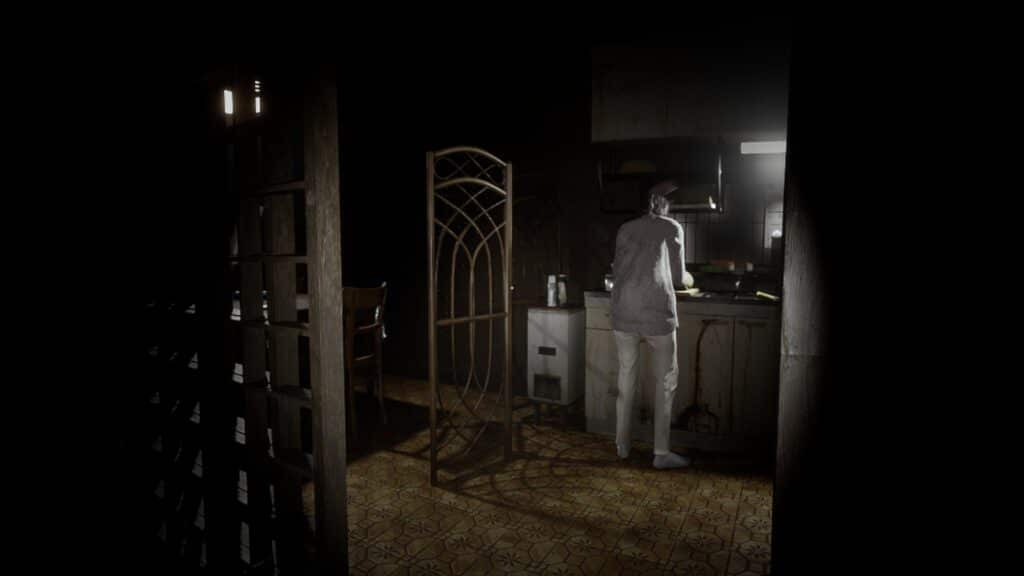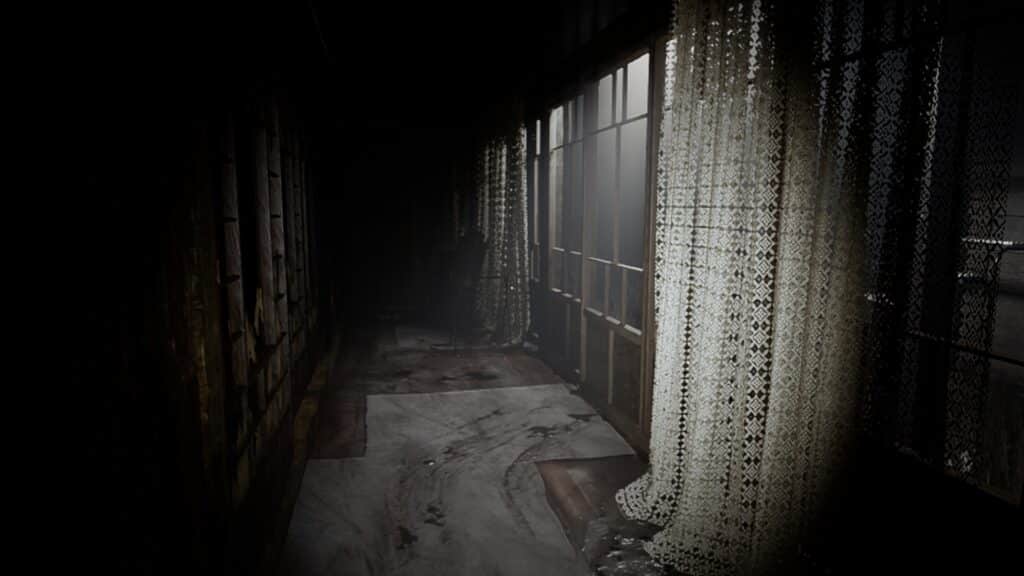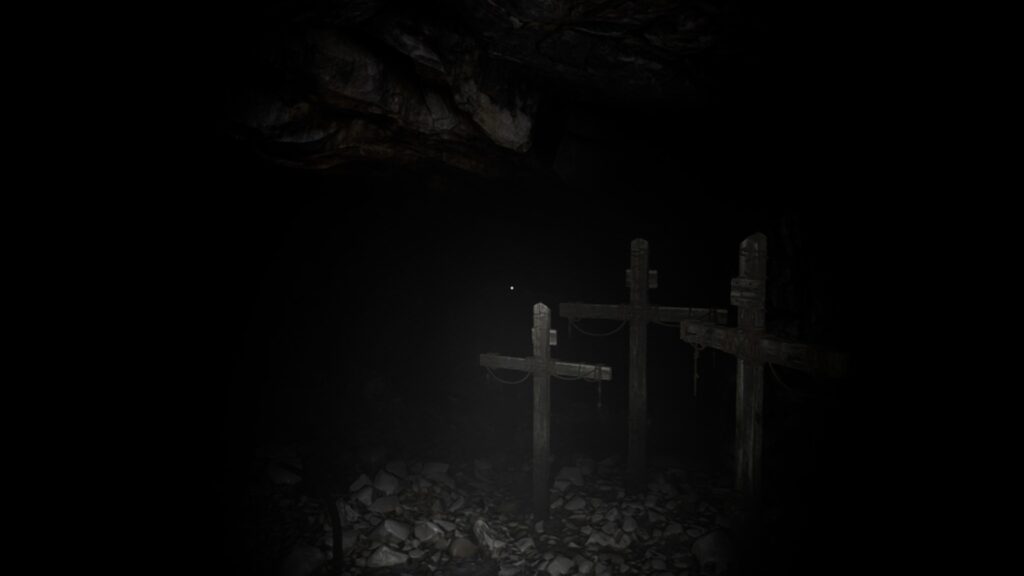
Jisatsu is the latest release from Chilla’s Art, the renowned Japanese indie horror developer. Hot off the release of the depressing ‘The Kidnap,‘ comes one more game to round out 2023.
In a first for Chilla’s Art, Jisatsu is styled as found footage. As a low-level employee of a shady media outlet, you’re tasked with drumming up some fresh content. Your boss is unscrupulous as to how you do this and cites that a new trend is to break into and investigate abandoned houses with tragic backstories, hoping to catch something paranormal on film.
You can see where this is going.
As with all Chilla’s Art games, Jisatsu leaves little buildup before throwing you into a spooky environment, so you’re immediately dropped into a decrepit house in search of ghosts. The bulk of the gameplay here is to walk around a beautifully creepy house and search for clues as to what happened to the previous tenants.
What’s on offer here is very slim, and perhaps the most barebones Chilla’s Art game yet.

Part of this works to its credit, as the dark and foreboding house is a treat to take in. Trash crowds the hallways, and piles up on counters and furniture. Every Shoji door is shredded, offering shadowed views into other rooms and breaking down a sense of place and flow around the house. Outside, weeds choke the frame of the house as if trying to swallow it up.
It’s oppressively dark and evokes the guest house segment of the Baker Mansion from Resident Evil 7. It’s a testament to how much heavy lifting a well-designed environment can do in a horror game. Every inch of this house is packed with detail, and its layout feels disorienting and claustrophobic. The environmental design is wonderful.
But that soon loses its novelty as the gameplay never expands upon it, and changes to the house are minimal over the course of the game. You spend most of the time just wandering around waiting for something spooky to happen, with little set dressing to interact with, or storytelling to break up the experience.
As you explore, you’ll find videotapes that you can “play,” which depict the deaths of the previous inhabitants.

These segments are a nice reprieve from the decrepit house and amount to all the storytelling that’s here. In a surprising twist, you actually experience the backstory of the game, as opposed to finding notes detailing it as is genre tradition.
The gameplay within the tapes is minimal at best, as it sees you walk around the house collecting a few items without much else. The steps are laid out for you plainly, and puzzle-solving is non-existent.
While I certainly don’t expect Jisatsu to be stuffed to the brim with complex puzzles and problem-solving—it’s clear they were going for a tighter, atmospheric experience—that atmosphere alone isn’t enough to carry the game.
Jisatsu would have benefited greatly from more interactions within the environment. There are a few fantastic and subtly scary moments, like a pair of eyes peering through a wall at you, or a woman standing behind a window only to appear to be a mannequin as you get closer, but these are few and far between.
A high point of Jisatsu is its minimal but creepy story.

Through the tapes you find in the house, you uncover the fates of the family who lived there before. Video recordings show a boy interacting with a voice coming from a hole inside a shack outside their home. It speaks to him in archaic English while demanding gifts and tithes.
The boy dutifully obeys, and from tape-to-tape, we see the slow descent of the family due to this entity’s influence. You’re never given explicit answers to what the thing is, but its use of Christian imagery can give you some not-so-subtle hints.
It’s very creepy! There was a surprising amount of restraint shown in regard to the storytelling here. While you get first-hand accounts of what befell the family, it’s usually understated and not at all rife with exposition. In that sense, Jisatsu excels as a walking-simulator experience rather than a more involved game like ‘The Kidnap’ or ‘The Closing Shift.’
Still, the story is minimal enough and loaded towards the end of the game, which leaves Jisatsu feeling slow and tedious for the bulk of its runtime. Overall you can blow through Jisatsu in about an hour. Despite its blistering runtime the pacing feels flat and that little gameplay there is to break up the walking is unfortunately dull.
The environment is creepy, and the premise is interesting, but that can only carry the game so far. The package feels light in a way that doesn’t serve the gameplay or story.
I can only recommend Jisatsu to the most dedicated fans of Chilla’s Art.
If Jisatsu gave you an itch for more Chilla’s Art, Check out a list of their best games ranked.
